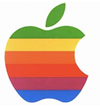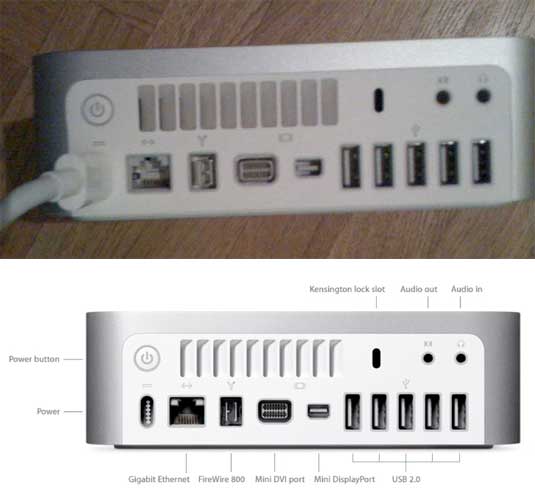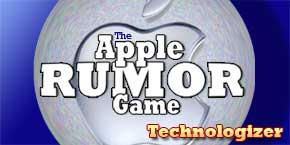 To quote Steve Jobs, boom! Apple just did a sweeping update of its desktop Macs that involves lower prices, beefier components (especially graphics), and other improvements. And it also upgraded its wireless networking gear. All in all, it confirmed a ton of rumors that swirled through the blogosphere in recent weeks.
To quote Steve Jobs, boom! Apple just did a sweeping update of its desktop Macs that involves lower prices, beefier components (especially graphics), and other improvements. And it also upgraded its wireless networking gear. All in all, it confirmed a ton of rumors that swirled through the blogosphere in recent weeks.
A very quick rundown of some of what’s new:
–The iMac line now includes an $1199 20-inch model and a flagship $1499 24-inch model with 4GB of RAM and 640GB of hard-disk space that begins at the same price as a more spartan 20-inch iMac previously did, both with the Nvidia GeForce 9400M integrated graphics that first showed up in last fall’s new MacBooks;
–rumors about a Mac Mini with five USB ports were boring but true–the new Mini has ’em, along with Nvidia 9400M graphics and both DVI and Mini DisplayPort (it now has the ability to drive two monitors at once). And Apple says it’s the most energy-efficient desktop in the world;
—AirPort Extreme wireless routers and Time Capsule router/storage devices do simultaneous 2.4-GHz and 5-GHz dual-channel networking, and offer a guest login feature;
–the high-end Mac Pro line now starts at $2499 ($300 less than before), sports Intel Nehalem Xeon CPUs and Nvidia GeForce GT 120 graphics (ATI Radeon HD 4870 is optional), includes both DVI and Mini DisplayPort video output, and features an “updated interior provides easy access to all components within the Mac Pro for hassle free expansion.”
Whew–that’s a lot of overhauling–all of it reflecting Apple’s classic strategy of improving the specs at a given price point and doing some price cuts without going anywhere near the lowest pricetags in the Windows world. (Folks who keep guessing the company will go cheap all of a sudden should remember this: In certain respects, Apple is a profoundly predictable company.) It’s not the least bit surprising that Apple simply rolled all this stuff into the Apple Store rather than holding a press event and attempting to create maximum hoopla. Putting even Phil Schiller onstage to discuss these new desktops wouldn’t have been worth the effort.
Which brings up a question: Does this mean there won’t be any more strikingly newsy new Apple products in the near future? And the answer, of course, is who knows? We’ll presumably see a new iPhone in the not-too-distant future, and there’s a good chance that it’ll be a more notable upgrade than any of these new desktops. Apple TV is probably due to be reinvented at least a little. And the fact that Apple has recently updated all of its desktops and laptops doesn’t mean that there’s not a chance that it’ll introduce an all-new computer of some sort soon. Not a garden-variety netbook, surely…but a non-netbook that can compete with netbooks is plausible enough.
One fact about Apple product rollouts: The fact that it does a bunch of them on one Tuesday doesn’t mean it’s not saving more introductions for just a few Tuesdays into the future.
On the other hand–and here’s a bit of profound analysis–I think we can deduce that the rumors about an Apple event on March 24th to launch new desktop Macs were false.
Just for fun, I’ll end with a comparison of the backsides of the spy-shot Mac Mini that some folks rejected as an obvious Photoshopped fake and the Mini which Apple did, indeed, release today…


 The business unit within Microsoft responsible for Mac apps (which Microsoft likes to call the MacBU) is as old as the Mac itself, and it’s never behaved like it had been fully assimilated into the Redmondian Borg. Office for the Mac has long been a distinctly different product from its Windows counterpart–sometimes for better, sometimes for worse. One of the most striking differences has been that Office for the Mac has never offered Outlook; instead, it includes Entourage, a sort-of-like-Outlook, sort-of-different application that got great reviews when it debuted but which has also suffered from iffy compatibility with Outlook and Exchange. It’s also faced increasing competition from within OS X itself, as Apple has beefed up its Mail and iCal apps (and moved to build compatibility with Microsoft’s Exchange server directly into Snow Leopard, the imminent OS X upgrade).
The business unit within Microsoft responsible for Mac apps (which Microsoft likes to call the MacBU) is as old as the Mac itself, and it’s never behaved like it had been fully assimilated into the Redmondian Borg. Office for the Mac has long been a distinctly different product from its Windows counterpart–sometimes for better, sometimes for worse. One of the most striking differences has been that Office for the Mac has never offered Outlook; instead, it includes Entourage, a sort-of-like-Outlook, sort-of-different application that got great reviews when it debuted but which has also suffered from iffy compatibility with Outlook and Exchange. It’s also faced increasing competition from within OS X itself, as Apple has beefed up its Mail and iCal apps (and moved to build compatibility with Microsoft’s Exchange server directly into Snow Leopard, the imminent OS X upgrade). I’m still curious whether Office 2010 for Mac will include integration with the Office Web Apps, and whether it’ll adopt a full-blown version of Office for Windows’ Ribbon interface. (Office 2008 for Mac has a sort of halfway-there version of the Ribbon.) Microsoft didn’t say anything about these questions today. Me, I’d vote for a Mac Office that bore at least somewhat more resemblance to the Windows one, not just for consistency but because Office 2007’s interface is superior to that of Office 2008.
I’m still curious whether Office 2010 for Mac will include integration with the Office Web Apps, and whether it’ll adopt a full-blown version of Office for Windows’ Ribbon interface. (Office 2008 for Mac has a sort of halfway-there version of the Ribbon.) Microsoft didn’t say anything about these questions today. Me, I’d vote for a Mac Office that bore at least somewhat more resemblance to the Windows one, not just for consistency but because Office 2007’s interface is superior to that of Office 2008. Last week, I tried to conduct an
Last week, I tried to conduct an 
 To quote Steve Jobs, boom! Apple just did a sweeping update of its desktop Macs that involves lower prices, beefier components (especially graphics), and other improvements. And it also upgraded its wireless networking gear. All in all, it confirmed a ton of rumors that swirled through the blogosphere in recent weeks.
To quote Steve Jobs, boom! Apple just did a sweeping update of its desktop Macs that involves lower prices, beefier components (especially graphics), and other improvements. And it also upgraded its wireless networking gear. All in all, it confirmed a ton of rumors that swirled through the blogosphere in recent weeks.
 There are many unique things about Apple, Inc. And one of the oddest of all is the degree to which straightforward reporting about the company’s activities has been drowned out in recent years by a surging sea of rumor, speculation, prediction, and–increasingly—wishful thinking. Everybody, it seems, wants to spoil the surprise of Apple product launches by revealing the secrets which the company works so very hard to keep. But a remarkable percentage of the these soothsayers are just plain terrible at their chosen profession. They’ve become the Gang That Couldn’t Predict Straight.
There are many unique things about Apple, Inc. And one of the oddest of all is the degree to which straightforward reporting about the company’s activities has been drowned out in recent years by a surging sea of rumor, speculation, prediction, and–increasingly—wishful thinking. Everybody, it seems, wants to spoil the surprise of Apple product launches by revealing the secrets which the company works so very hard to keep. But a remarkable percentage of the these soothsayers are just plain terrible at their chosen profession. They’ve become the Gang That Couldn’t Predict Straight.